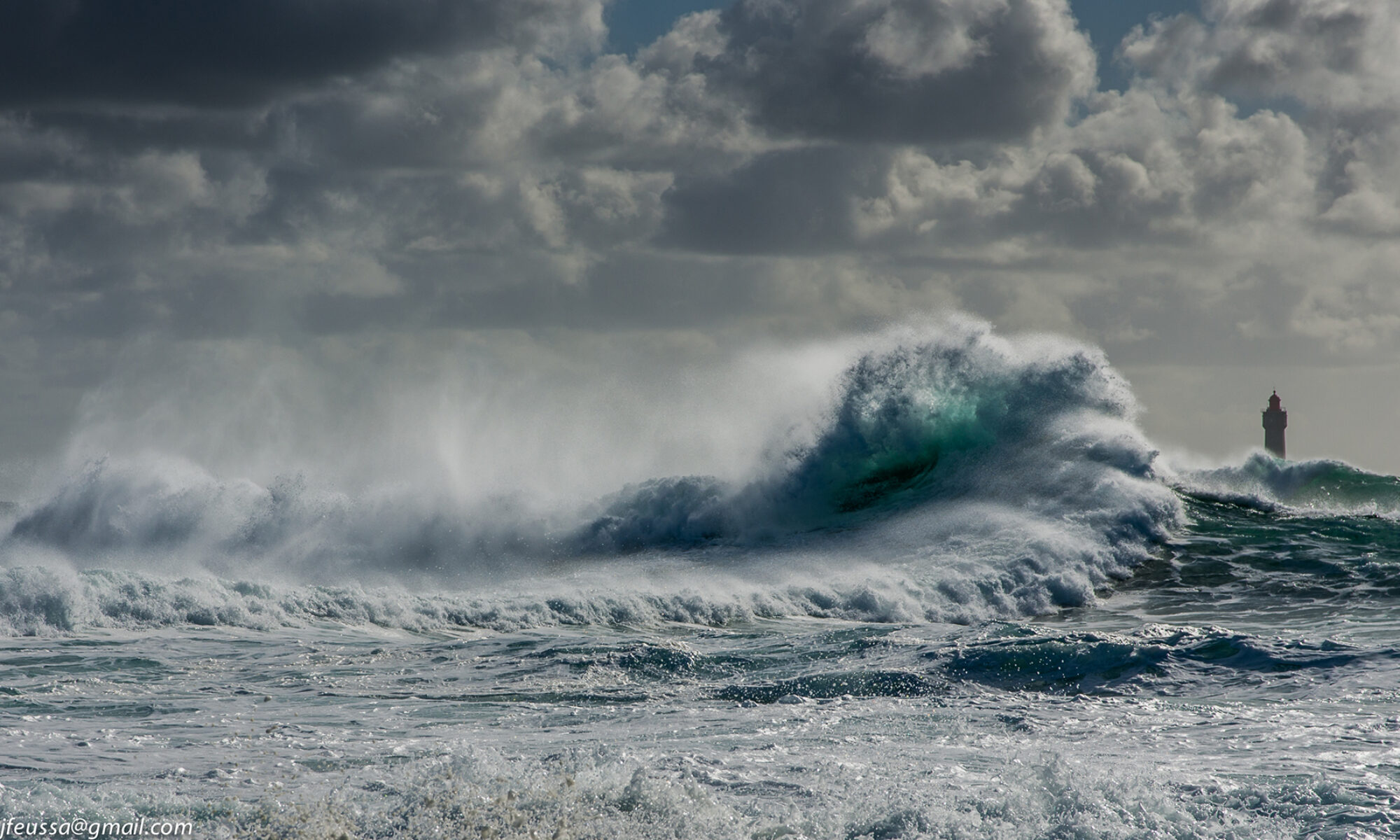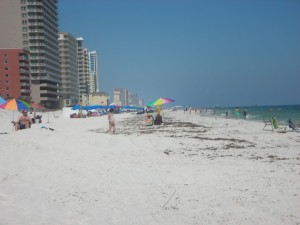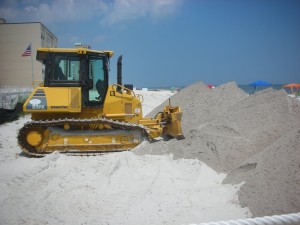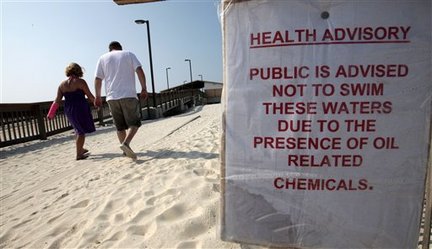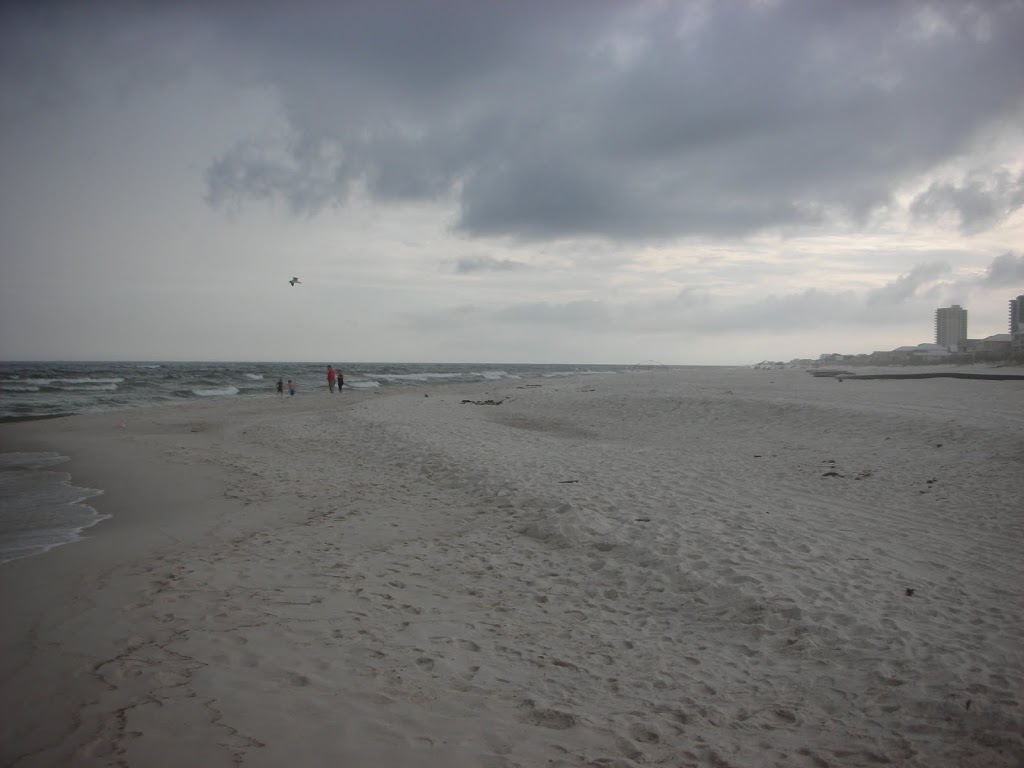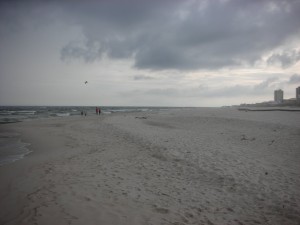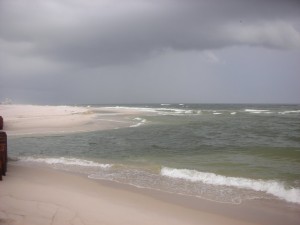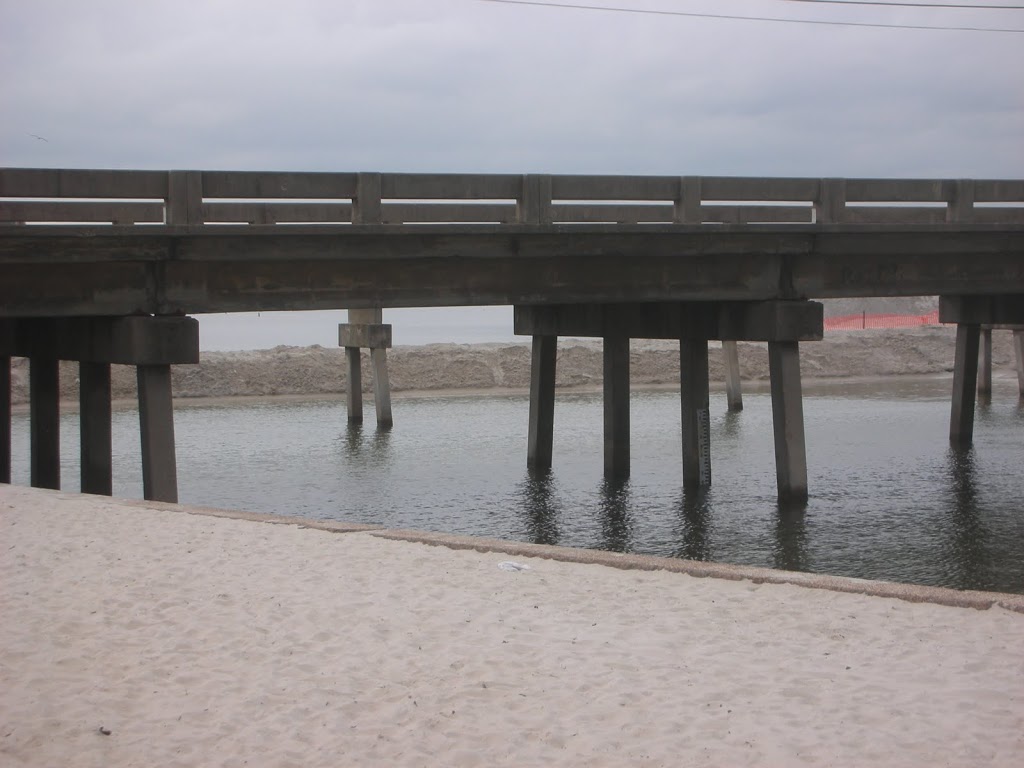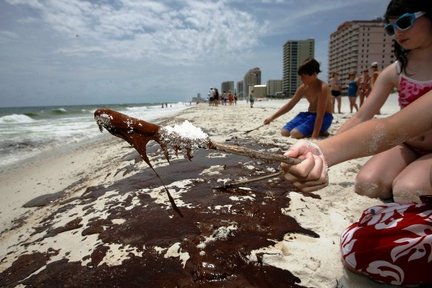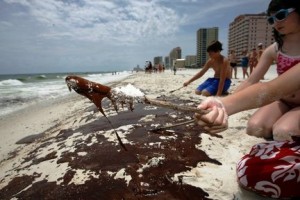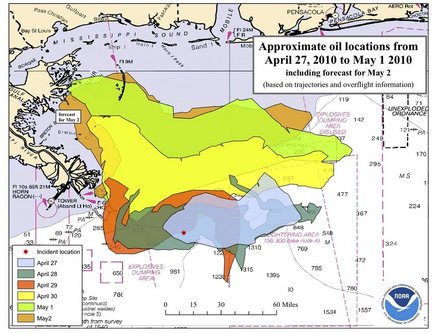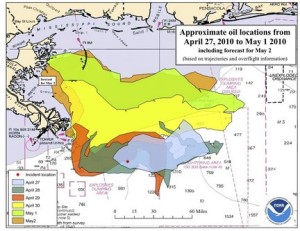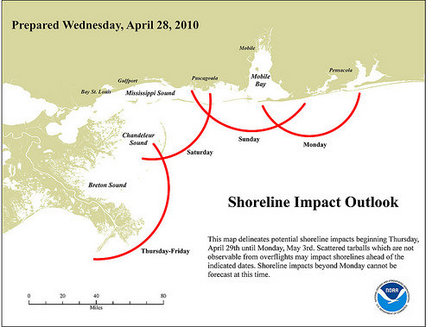Isolated tar balls have been reported and rapidly cleaned, but for the most part the beaches remain clear and people were enjoying the sands and the water today. Given the nature of this blog, it is nice to report good news in what could become a complete disaster. As this slow-motion crisis evolves, we will continue to report. The final image, presented by http://www.wunderground.com/ paints an ominous picture of what is lurking in the Gulf of Mexico.
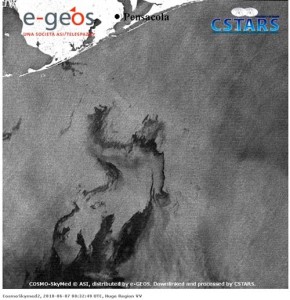 The oil spill on June 6, 2010 at 8:32pm EDT, as seen by Synthetic Aperture Radar (SAR) imagery from the Italian Cosmo-SkyMed (COnstellation of small Satellites for Mediterranean basin Observation) satellite. A large region of oil was a few miles offshore of Pensacola, Florida. Image credit: University of Miami Center for Southeastern Tropical Advanced Remote Sensing, Rosenstiel School of Marine and Atmospheric Science.
The oil spill on June 6, 2010 at 8:32pm EDT, as seen by Synthetic Aperture Radar (SAR) imagery from the Italian Cosmo-SkyMed (COnstellation of small Satellites for Mediterranean basin Observation) satellite. A large region of oil was a few miles offshore of Pensacola, Florida. Image credit: University of Miami Center for Southeastern Tropical Advanced Remote Sensing, Rosenstiel School of Marine and Atmospheric Science.
